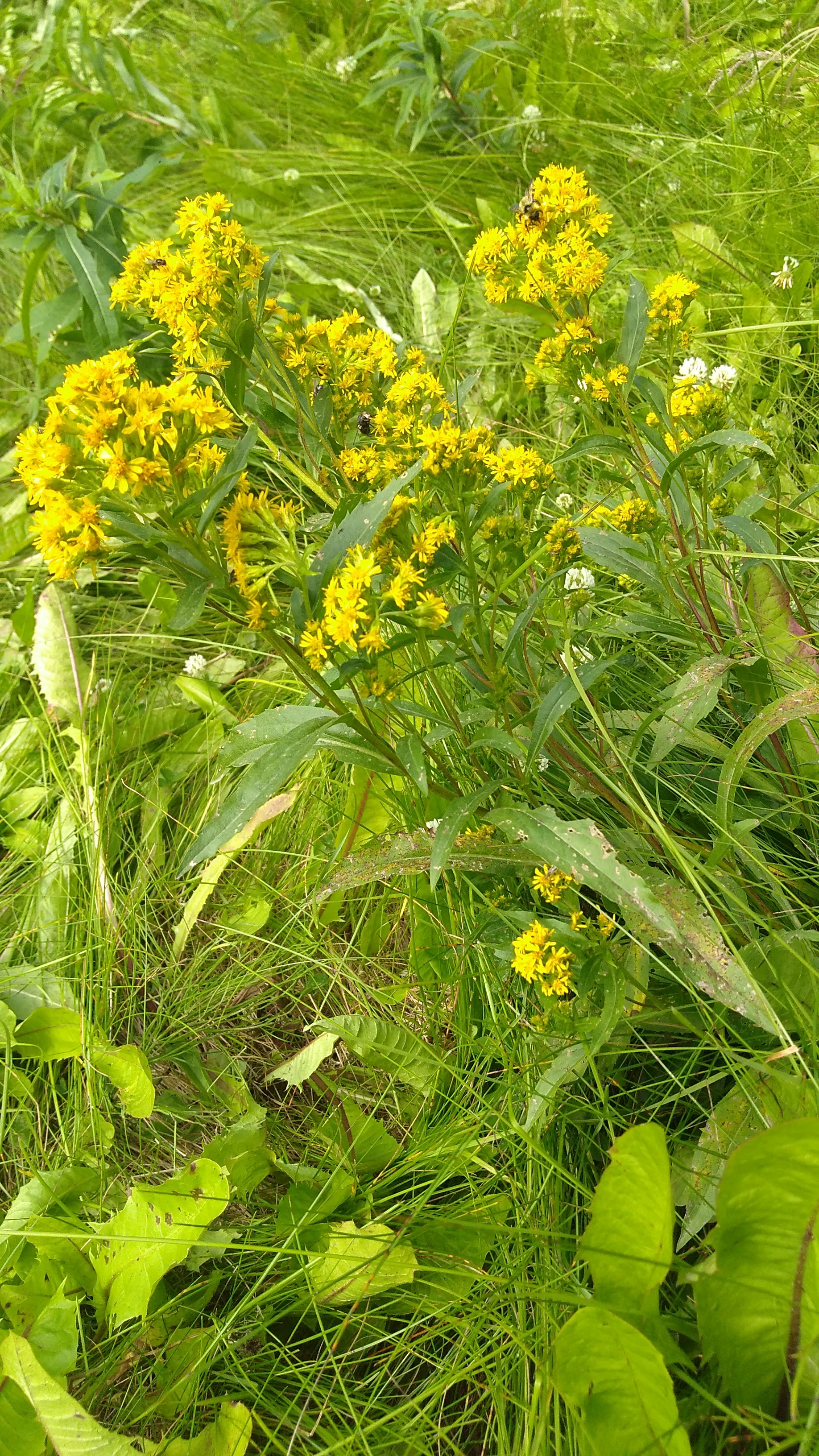Allergies blow.
Greetings! It’s Autumn which means the leaves are changing, fireweed is turning the beautiful red making the hills look like they’re on fire, there’s a nip in the air. And it’s time for fall allergies! Yuck :P. The runny nose, itchy eyes, sneezing, and overall hay fever sucks. But that’s okay because I’ve gathered a list of 6 Alaskan plants that can help you combat your allergies. In addition to these herb helping with your allergies, you can try doing a steam bath to relieve your sinuses. Check out how here.
Goldenrod – Solidago lepida, S. radiata, S.canadensis

A lot of people mistake goldenrod for ragweed, so they think this is what causes their hay fever. However, you’ll want to take this for your hay fever as it hay fever as it contains quercetin which is an antihistamine as well as antioxidant. Earlier this spring/summer Jason was having a horrible time with his allergies. We had a bunch of this growing in our yard so I told him to go pick some of the flowers to make a tea. It definitely helped him. You can drink the flowers and leaves as a tea or make it into a tincture. The great thing is that it flowers about the time spring/summer hay fever takes place!
Nettle – Urtica gracilis, U. Lyallii

Stinging nettle has antihistamine properties which make it excellent to combat allergies. It can be taken as a tea, capsule or tincture. Additionally, its alterative and expectorant properties can also help rid the body of allergens. This is something that I take as a capsule to help both with allergies and with colds/flus.
Plantain – Plantago major

Plantain has antihistamines in it which make it helpful for runny noses during hay fever season. It can be taken as a tea, tincture or as a cough syrup.
Pineapple weed – Matricaria matricarioides

Because of its actions in the bronchial system, I like to use pineapple weed for allergies as well. The anti-inflammatory properties help with any inflammation in the system due to allergies as well. A tea is one of the best ways to use this herb. Although if you have itchy eyes, you can make a compress for relieving the itch.
Yellow Rattle – Rhianthus minor/Eyebright – Euphrasia officinalis/mollis, E. disjuncta/arctica

Yellow rattle while not in the same genus of eyebright (which also grows in Alaska) is an substitute for it, which I’ve used in the past to help with my allergies. It’s expectorant and anti-catarrahl properties help with the mucous membranes of not only allergy problems, but with colds or flus as well. A tea or capsule of the dried flowers will help with that runny nose. Some people claim that yellow rattle is not as potent as the actual eyebright, but I haven’t had the chance to test it out yet. I was able to collect some this summer, so I’ll let you know as soon as I try it out.
Crowberry – Empetrum nigrum

Also known as mossberries or blackberries(not the kind you get from the store), crowberries also have the antihistamine quercetin in them. It also has a lot of antioxidants to help with your allergy symptoms. You can eat the berries, dry them and make a tea out of them or make a tincture.
Do you have a plant not list here that you like to use for allergies? Comment below!
That’s it for this episode, thanks for reading! Stay tuned for next week’s post.




